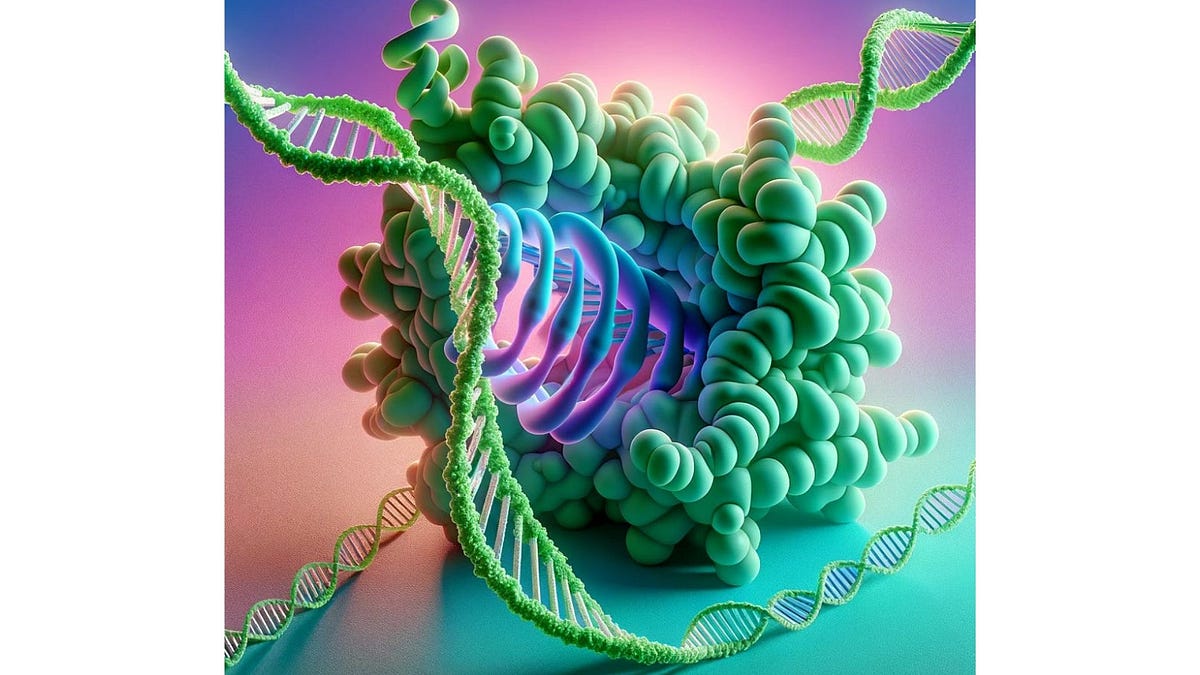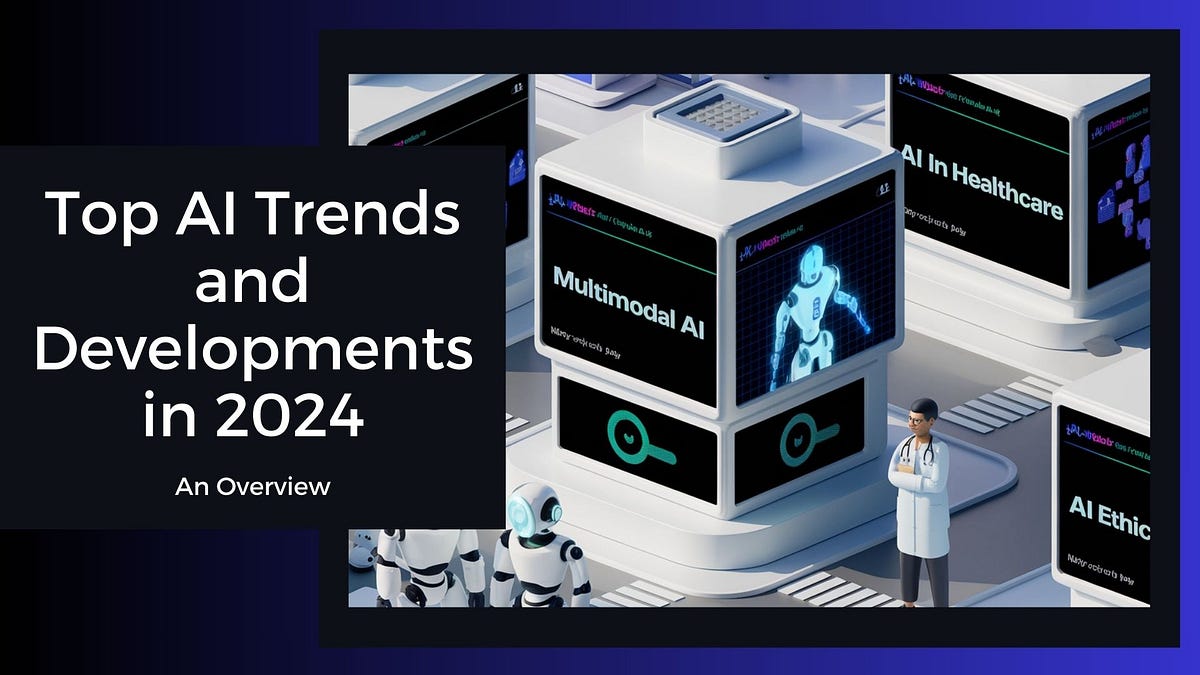- The AI Entrepreneurs
- Posts
- 🏆 AI Triumphs at Nobel 2024: Rewriting Science with Machine Minds
🏆 AI Triumphs at Nobel 2024: Rewriting Science with Machine Minds
PLUS: 🌍 From Snapshots to Worlds: AI’s 10-Second Magic

Welcome to AI Entrepreneurs
Today’s AI Entrepreneurs newsletter highlights the latest breakthroughs in AI, from Nobel Prize-winning advancements in protein prediction to real-time 3D scene generation, OpenAI’s media partnerships, and cutting-edge healthcare innovations. Explore how AI is revolutionizing industries and empowering creators.

AI Innovators Sweep Nobel Prizes in Science
Google DeepMind’s AlphaFold and AI Win Nobel Prize for Protein Structure Prediction
The 2024 Nobel Prize in Chemistry has been awarded to three researchers for their groundbreaking work in predicting and designing protein structures. David Baker from the University of Washington received half of the award for his contributions to computer-aided protein design. Meanwhile, Demis Hassabis and John Jumper from Google DeepMind shared the other half for their revolutionary AlphaFold AI system, which accurately predicts protein structures from amino acid sequences. Their breakthroughs have unlocked new possibilities in medicine and biotechnology.

Image Source: popular-chemistryprize2024-3.pdf (nobelprize.org)
AlphaFold, first unveiled in 2020, achieved remarkable accuracy in predicting protein folding, solving a scientific challenge that had persisted for decades. In 2024, the team presented AlphaFold 3, which can also predict interactions between proteins and other molecules like DNA and RNA. These advances not only enhance our understanding of biological processes but are also accelerating drug development and offering new tools for research.
AlphaFold's success shows how AI can transform science, with the potential to fast-track the discovery of new medicines, improve diagnostics, and enable new biotechnologies, creating immense opportunities for future research.
Explore the blog post below ⬇️ to learn more about AlphaFold
AI Pioneers John Hopfield and Geoffrey Hinton Win 2024 Nobel Prize in Physics
John Hopfield and Geoffrey Hinton have been awarded the 2024 Nobel Prize in Physics for their groundbreaking work in machine learning using artificial neural networks. Hopfield developed an associative memory system capable of storing and reconstructing data patterns, while Hinton invented the Boltzmann machine, which autonomously identifies data properties. Both drew inspiration from physics concepts, forming the foundation for today’s AI systems. Their contributions are instrumental in fields like speech processing, image recognition, and the development of new materials.

Image Source: popular-physicsprize2024-2.pdf (nobelprize.org)
This recognition is Hinton’s second major honor following his 2019 Turing Award. His persistent work in deep learning, alongside fellow researchers, has revolutionized AI, laying the groundwork for advancements that power modern technology. The work of both scientists not only advanced AI but also holds significant potential for applications across industries, from material science to healthcare.
The recognition of Hopfield and Hinton underscores the vital role of AI in shaping future innovations. Their contributions could inspire further advancements in AI systems, paving the way for more efficient technologies and expanding AI’s impact across scientific and industrial fields.

All Things OpenAI – Deals, Ethics, and Industry Impact
OpenAI's Biometric Breakthrough Raises Safety Concerns
A recent study by researchers at the Norwegian University of Science and Technology and the Mizani and Idiap Research Institute has shown that GPT-4 can recognize faces, determine gender, and estimate age in photos with accuracy comparable to specialized algorithms like MobileFaceNet. Surprisingly, GPT-4 was not specifically trained for these tasks, yet it achieved 100% accuracy in gender recognition and 74.25% in age estimation tests.
The study also highlighted a potential safety issue, as researchers were able to bypass GPT-4’s safeguards and analyze real images by claiming they were AI-generated. This raises concerns about privacy and the need for further research into the security of large language models in biometric applications.
OpenAI Partners with Hearst to Integrate Content into ChatGPT
OpenAI has announced a content partnership with Hearst, integrating its vast array of newspaper and magazine content into OpenAI’s products. This collaboration will enhance ChatGPT with content from over 20 magazines and 40+ newspapers, including well-known brands such as the Houston Chronicle, San Francisco Chronicle, Esquire, Cosmopolitan, and Women’s Health. Users of ChatGPT will now have access to curated lifestyle content covering topics like local news, fashion, health, fitness, and more.

Image Source: OpenAI and Hearst Content Partnership | OpenAI
While OpenAI's approach is more transparent than competitors like Perplexity, ethical concerns around AI training data persist. By offering attribution and explicit partnerships, OpenAI takes a step toward addressing these issues, though the future of media in AI hands remains uncertain.

Unlock Healthcare's AI Revolution with AIHealthTech Insider: Issue #17
Dive into the future of health with the latest edition of AIHealthTech Insider. Explore how AI is transforming healthcare with innovations like holographic consultations, enhancing remote patient care through immersive interactions and improved care quality.
Stay updated on AI's impact on diagnostics, treatments, and safety.Click here 🔽
Interested in AIHealthTech Insider?Are you interested in receiving the AIHealthTech Insider newsletter directly to your inbox? Stay updated on the latest AI-driven healthcare innovations. |

If you're frustrated by one-sided reporting, our 5-minute newsletter is the missing piece. We sift through 100+ sources to bring you comprehensive, unbiased news—free from political agendas. Stay informed with factual coverage on the topics that matter.

Kern AI
Introducing GenAI for Digital Operational Resilience Act (DORA) - Join our Webinar
Are you prepared to strengthen your organization’s third-party risk and stay ahead of evolving regulatory demands when DORA kicks in on January 17th 2025. Join us as we explore how the latest AI technology empowering compliance teams to safeguard vendor risk more effectively than ever before.

AI Protection for Digital Work
Adobe Launches Content Authenticity App to Protect Creatives from AI Misuse
Adobe is set to launch a free web app called Content Authenticity in early 2025, allowing creators to add secure metadata to their digital content. This metadata, including details about the creator and editing process, serves as "nutritional information" for images, videos, and audio files. Creatives can tag their work with attribution data and even opt out of having it used to train generative AI models. The app will be available as a public beta, accessible without an Adobe subscription.

A key feature is making metadata hard to remove, helping creators retain control. Adobe's tool, including a Chrome extension for inspecting website metadata, addresses creators' concerns about unauthorized AI use. It could set a new industry standard by empowering creators to protect their work and encouraging AI providers to respect creator rights with an opt-out function.

AI’s 10-Second Magic
WonderWorld: AI's New Leap in Real-Time 3D Scene Generation
Researchers at Stanford University and MIT have unveiled WonderWorld, an AI system capable of generating interactive 3D scenes from a single image in real-time. This breakthrough offers users the ability to build and explore virtual environments in just seconds.
 Image Source: WonderWorld (kovenyu.com) |  Image Source: WonderWorld (kovenyu.com) |
Key Features:
Real-Time 3D Creation: Generates 3D scenes in under 10 seconds on Nvidia A6000 GPUs.
Interactive Controls: Users can manipulate content and layout through camera movement and text input.
Multi-Layer Scene Representation: Uses a FLAGS model to represent foreground, background, and sky layers.
Guided Depth Diffusion: Reduces geometric distortions during scene transitions with a depth diffusion process.
Optimized Visual Quality: Outperforms existing methods in speed and visual realism, confirmed by user studies.
WonderWorld starts by generating an initial 3D scene from an image, then alternates between scene creation and FLAG representations. Users can control scene generation via interactive inputs, making it a versatile tool for virtual environments, especially in game development.

Medium Blogs

Startup Success: Instant Access to AI Entrepreneur Courses!










Reply